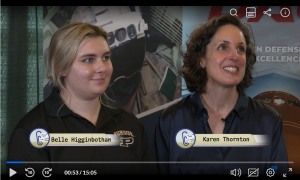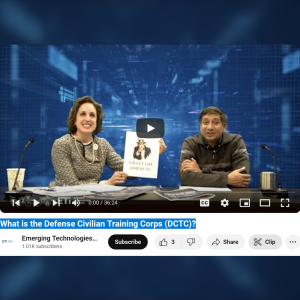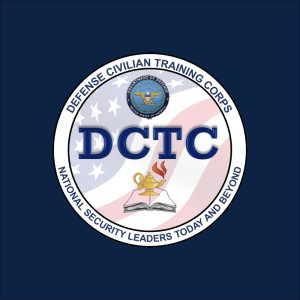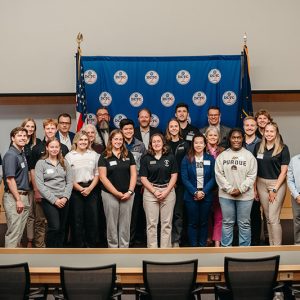External Resources
In the Press is where members of the AIRC network are featured, thinking outside the box, transforming the status quo, and contributing their extensive knowledge and experiences to the domain of acquisition innovation.
Report to Congress: Acquisition Workforce Educational Partnerships
In Response to Section 801 of the National Defense Authorization Act for Fiscal Year 2022 (Public Law 117-81)
September 2022
Department of Defense (DoD)
Office of the Assistant Secretary of Defense (Acquisition) [OASD(A)]
OASD(A) Leadership (updated: Feb. 2022)
Office of the Assistant Secretary of Defense (Acquisition) [OASD(A)]
OASD(A) Leadership (updated: Feb. 2022)
Office of the Under Secretary of Defense for Acquisition & Sustainment [OUSD(A&S)]
Under Secretary of Defense for Research and Engineering [OUSD(R&E)]
OUSD(R&E) Defense Primer (Credit: Congressional Research Service; with organization chart; updated: Dec. 2021)
US Army
Office of the Assistant Secretary of the Army (Acquisition, Logistics and Technology) [ASA(ALT)] Organization Chart (updated: Feb. 2022)
— Other ASA(ALT) Organization Resources (Includes Program Executive Offices, publications and portals)
— U.S. Army Acquisition Support Center (USAASC) Organization Chart and general information
US Navy
US Air Force
There are other Congressional Research Service Primers at CRS Search Results.
Data Sources for Analyzing Acquisition
These pages identify public and restricted government data and information sources relevant for acquisition-related analysis. To structure the information, data sources are organized in groups related to acquisition system themes and flows, such as following the money, following the contracting, workforce, and others. These elements overlap, so data sources may appear in multiple places.
This is an initial list of data sources that has been updated through May 2023. Please CONTACT US with any contributions you would like considered.
Follow the Money
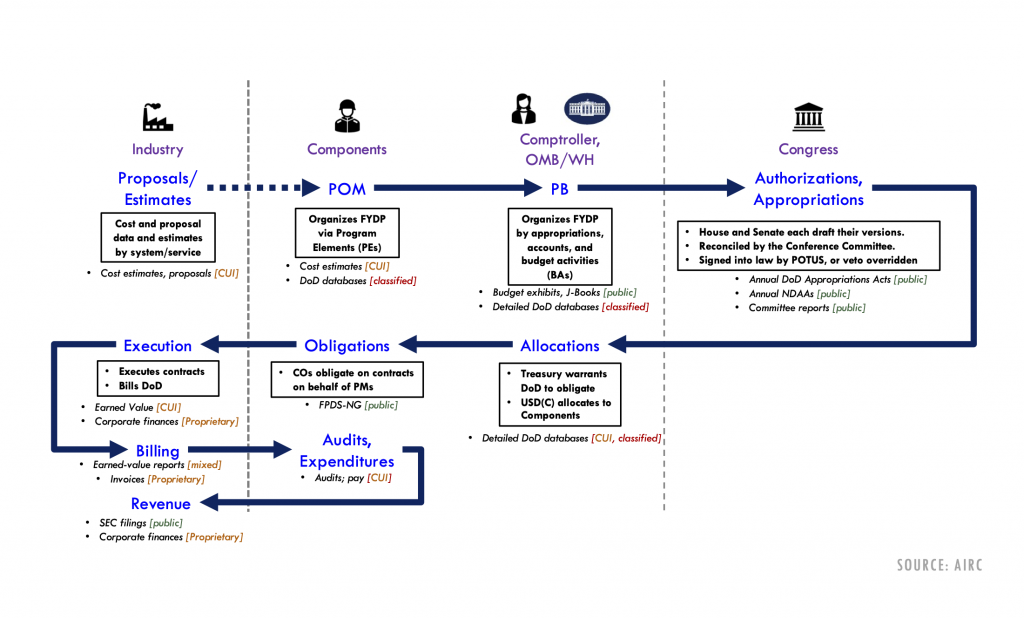
Component Program Objective Memorandum (POM)
POM submission database [Restricted/Non-Public Access]
President’s Budget Request (PB)
Defense Budget Materials (OUSD(Comptroller)) [public]—Versions on a separate page by fiscal year (FY).
– Budget Briefing (PDF briefing)
– Overview of FY Defense Budget (PDF briefing)
– Program Acquisition Costs by Weapons System (PDF)
– Financial Summary Tables (PDF)
– National Defense Budget Estimates for FY 2021 (Green Book) (PDF, Excel) [Extremely useful data, including inflators!!]
– Operations and Maintenance Overview (PDF)
– Budget Documents (“Justification Books” or “J-Books”) (PDF and Excel)
— Military Personnel Programs (M-1)
—— Direct War and Enduring Costs
—— Budget Appendix Display (M-1)
— Operation and Maintenance Programs (O-1)
—— Direct War and Enduring Costs
—— Budget Appendix Display (O-1)
— Revolving and Management Fund (RF-1)
—— Direct War and Enduring Costs
—— Budget Appendix Display (RF-1)
— Procurement Programs (P-1)
—— Direct War and Enduring Costs
—— Budget Appendix Display (P-1)
— Procurement Programs Reserve Components (P-1R)
—— Direct War and Enduring Costs
—— Budget Appendix Display (P-1R)
— Research Development, Test & Evaluation Programs (R-1)
—— Direct War and Enduring Costs
—— Budget Appendix Display (R-1)
— Military Construction, Family Housing, and Base Realignment and Closure Program (C-1)
— US Army Budget Documentation
— US Navy Budget Documentation
— US Air Force Budget Documentation
— Defense Wide Budget Documentation
— Overseas Contingency Operations (OCO)
— Justification for Security Cooperation Program and Activity Funding Acquisition strategy
National Defense Authorization Act (NDAA) (GovTrack.us) [public]. Annual congressional authorizations to spend money; includes statutory changes to U.S. Code for positions, authorities, responsibilities, reports, etc. Find the one passed into law.
– Final law, committee reports, and history:
—- FY2021 NDAA: H.R.6395 – 116th Congress (2019-2020): William M. (Mac) Thornberry National Defense Authorization Act for Fiscal Year 2021 | Congress.gov | Library of Congress
—- FY2020 NDAA: S.1790 – 116th Congress (2019-2020): National Defense Authorization Act for Fiscal Year 2020 | Congress.gov | Library of Congress
—- FY2019 NDAA: H.R.5515 – 115th Congress (2017-2018): John S. McCain National Defense Authorization Act for Fiscal Year 2019 | Congress.gov | Library of Congress
– FY2011–FY2021 NDAAs (.zip of PDFs)
– FY1995–FY2010 NDAAs (.zip of PDFs)
Conference Report and Joint Explanatory Statement (JES) accompanying the NDAAs (search in Congress.gov (Library of Congress)) [public]—House and Senate conference committee decisions and directions.
– FY2021 NDAA Conference Report and JES: CRPT-116hrpt617.pdf (congress.gov)
– FY2020 NDAA Conference Report and JES: CRPT-116hrpt333.pdf (congress.gov)
– FY2019 NDAA Conference Report and JES: CRPT-115hrpt874.pdf (congress.gov)
Actual appropriations by major acquisition systems
– Defense Budget Materials (OUSD(Comptroller)) [public]. The prior-year budgets for individual programs in each FY’s Program Acquisition Costs by Weapons System report will be actual appropriations.
– Selected Acquisition Reports (whs.mil) [public]. The prior-year budgets in a SAR for individual programs will be actual appropriations.
CADE (osd.mil) [Restricted/Non-Public Access]. Integrated data archive and analysis system for cost CADE includes:
– Contractor Cost Data Reports (CCDRs/1921s/FlexFiles) [Restricted/Non-Public Access]. CCDRs are the primary means within the Department of Defense (DoD) to systematically collect actual data on the development, production and sustainment costs incurred by contractors performing DoD acquisition contracts.
– Cost Analysis Requirements Descriptions (CARDs) [Restricted/Non-Public Access]. CARDs capture program-level programmatic and technical descriptions that analysts use to build estimates.
– Software Resource Data Reports (SRDRs) [Restricted/Non-Public Access]. SRDRs capture software effort, size, and schedule metrics for usage as historical reference points in future cost estimates.
– CADE Library (CAPE) [Restricted/Non-Public Access]. The CADE Library houses a variety of cost documents including cost estimates, reports, studies, site visits, etc., that were collected to harness and share knowledge across the cost community and provide all government analysts with relevant context for the data.
Audits of the DoD
– DoD Agency Financial Reports (Comptroller) [public].
— Audited Financial Statements (DCAA.mil) [public]. “DCAA’s Audited Financial Statements and Independent Auditor’s Reports for 2010 to the present.”
Additional References:
DoDD 7045.14, January 25, 2013, Incorporating Change 1 on August 29, 2017 (whs.mil) [public].
Defense Primer: Future Years Defense Program (FYDP) (CRS: congress.gov) [public].
Defense Primer: Defense Appropriations Process (CRS: congress.gov) [public].
Defense Primer: The National Defense Budget Function (050) (CRS: congress.gov) [public].
Defense Primer: National and Defense Intelligence (CRS: congress.gov) [public].
DOD Audit (defense.gov) [public].
Follow the Programs
Major defense acquisition programs (MDAPs) that acquire systems and services.
Defense Budget Materials (OUSD(Comptroller)) [public]. The Comptroller publishes a report on Program Acquisition Costs by Weapons System each fiscal year with the budget request materials.
Selected Acquisition Reports (SARs) (whs.mil) [public]. Selected SAR for individual ACAT I (major) defense acquisition programs (MDAPs) released as a result of FOIA requests are posted at this site.
SAR Summary Tables. These tables have been released annually by the DoD. The master website listing each report is no longer functioning, but the following are selected reports.
– 2010s (.zip file) [public].
– 2000s (.zip file) [public].
– 1990s (.zip file) [public].
– 1980s (.zip file) [public].
– 1970s (.zip file) [public].
DAVE (Defense Acquisition Visibility Environment) (osd.mil) [Restricted/Non-Public Access]. A large collection of program data, including cost, schedule, performance, requirements, and budgetary data. DAVE also includes links to various other internal (restricted) government acquisition-related data sources. Databases linked from DAVE include the following:
– DAMIR (Defense Acquisition Management Information Retrieval System) [Restricted/Non-Public Access]. This legacy system is transitioning to OSD’s ADVANA system (Restricted/Non-Public Access). A large collection of program data, including cost, schedule, performance, requirements, and budgetary data.
– SAR/MAR – Selected Acquisition Report/Major Automated Information System (MAIS) Annual Report (DAVE account required). [Restricted/Non-Public Access], except for those publicly release (see above)]. Access authoritative copies of submitted SARs and MARs in PDF format
– AIR – Acquisition Information Repository (AIR account required) [Restricted/Non-Public Access]. Access milestone documents for ACAT I and some lower ACAT programs.
– EVA – Earned Value Analysis (DAMIR account required) [Restricted/Non-Public Access]. See earned value trends.
– Affordability – Report and analyze program affordability data. [Restricted/Non-Public Access].
– O&E – Obligations and Expenditures [Restricted/Non-Public Access]. Compare obligations and expenditures.
– MME – Minimum/Maximum/Economical Production Rate (DAVE account required) [Restricted/Non-Public Access]. View production efficiency assessments of equipment procurements projected in the President’s Budget.
– ADS – Acquisition Data Sets (DAVE account required) [Restricted/Non-Public Access]. Use Curated data sets to analyze programs and portfolios.
– EVM-CR – Earned Value Management-Central Repository (EVM-CR account required) [Restricted/Non-Public Access]. Leverage centralized reporting, collection, and distribution of earned value data.
– CADE – Cost Assessment Data Enterprise (CADE account required) [Restricted/Non-Public Access]. Access data and visualizations to support cost analysis.
Advancing Analytics (ADVANA) [Restricted/Non-Public Access]. “The Advancing Analytics (Advana) platform is the single enterprise authoritative data management and analytics platform for the Secretary of Defense, Deputy Secretary of Defense, and Principal Staff Assistants (PSAs), with inputs from all DoD Components.” (Deputy Secretary of Defense Memorandum: Creating Data Advantage (5/5/21) [public]).
Actual appropriations by MDAPs.
– Defense Budget Materials (OUSD(Comptroller)) [public]. The prior-year budgets for individual programs in each FY’s Program Acquisition Costs by Weapons System report will be actual appropriations.
– Selected Acquisition Reports (whs.mil) [public]. The prior-year budgets in a SAR for individual ACAT I (major) defense acquisition programs (MDAPs) will be actual appropriations.
Acquisition Performance
– Program Assessments & Root-Cause Analyses (osd.mil) [public].
– Data Analytics (osd.mil) [public].
– FY2019-2020 Department of the Air Force Biennial Acquisition Report (af.mil) [public].
Sustainment
– Air Force Total Ownership Cost (AFTOC). The Air Force’s set of data on O&S costs.
– O&S Cost Web (army.mil). The Army’s set of online databases for O&S costs, including OSMIS, FORCES, and The Army Military-Civilian Cost System.
– Navy VAMOSC. “The Navy Visibility and Management of Operating and Support Costs (VAMOSC) management information system collects and reports US Navy and Marine Corps historical operating and support (O&S) costs. VAMOSC provides the direct O&S costs of weapon systems, some linked indirect costs (e.g., ship depot overhead), and related non-cost information such as flying hour metrics, steaming hours, age of aircraft, etc. The VAMOSC Military Personnel databases contain personnel costs and attribute data. VAMOSC has recently added databases covering Navy Department civilian personnel and Navy facilities physical characteristics and operating costs. Depending on the specific commodity type and system, these relational databases contain up to 25 years of data presented by fiscal year in alternative hierarchical cost element structures.”
Additional References:
DAU News – Data Analytics and the Adaptive Acquisition Framework [public].
Follow the Contracting
Data on the management of contract, grants, and other transactions.
Procurement Integrated Enterprise Environment (PIEE) (eb.mil) [Restricted/Non-Public Access]. “The Procurement Integrated Enterprise Environment (PIEE) is the primary enterprise procure-to-pay (P2P) application for the Department of Defense and its supporting agencies…”
– DPC | Contracting eBusiness | E-Business | Purchase Request Data Standard (PRDS) (osd.mil) [public].
Pre-Award (Strategy, Solicitation, Source Selection, and Negotiation)
– SAM.gov
—- Contract Solicitations, RFIs, and Industry Days (SAM.gov) [public].
——– Contract Solicitations (SAM.gov). Archives since the 1970s of Federal-wide list of notices of proposed contract actions expected to exceed $25,000. Notices include solicitations, pre-solicitations, sole source justifications, awards and other notices related to the acquisition of supplies and services. Solicitations FAQ.
—- Exclusions (SAM.gov) [public]. Look up individual companies barred from received federal contracts.
——– Exclusions Archive (SAM.gov) [public]. Exclusions FAQ.
—- Entity Registrations (SAM.gov) [public]. Companies and other entities registered with SAM.gov.
—- SAM FAQs (SAM.gov | Help) [public]. FAQs for contract opportunities, contract data, wage determinations, assistance listings, exclusions, entity registration, etc.
– Grant Opportunities (grants.gov) [public].
—- Federal Assistance Listings (SAM.gov) [public]. Current and historical data on federal assistance (e.g., grants).
– Bid Protest Decisions & Docket (gao.gov) [public].
—- Covington Bid Protests Articles (private source) [public].
—- Protest Tracker (DoD) [Restricted/Non-Public Access]. “The Protest Tracker Tool will be hosted in the Procurement Integrated Enterprise Environment (PIEE) and will have a single sign-on option via PIEE. This tool only tracks protests against DoD contracts.”
Contract Initiation (awards and archiving)
– Federal Procurement Data System – Next Generation (fpds.gov) [public]. Archive of meta-data on individual awards, including contract modifications.
—- Contract Data Reports (SAM.gov) [public]. Standard, ad-hoc, and static reports on contract awards and modifications.
– Procurement Integrated Enterprise Environment (PIEE) (eb.mil) and PIEE (dla.mil) [Restricted/Non-Public Access]. Procurement Integrated Enterprise Environment (PIEE) is the DoD and federal one-stop-shop for procurement capabilities. The PIEE is home to:
—- Wide Area Workflow
—- Electronic Data Access (EDA). Archived copies of all DoD contracts.
—- MyInvoice
—- Other capabilities including: Pre-award, award and post-award administration, Payment, Property management, and contract close out.
—-Procurement Administrative Lead Time (PALT) Tool [Restricted/Non-Public Access]. “The PALT Tool captures information on administrative lead time (the time from requirement identification to contract award) for the Department’s major programs. Use of the PALT Tracker provides visibility into PALT and Pre-PALT timelines across the Department’s Major Defense Acquisition Programs (MDAPs), Major Automated Information System (MAIS), and other high-value programs. The tool is currently required to be used for all contracts, orders, and modification actions with a value of $250M or greater. The initial phase of the deployment focuses on non-competitive procurements; future phases of this effort will expand the required reporting to competitive procurements.” PIEE Procurement Administrative Lead Time (PALT) Tool (osd.mil)
Execution Management
– Defense Logistics Agency FOIA Electronic Reading Room (dla.mil) [public]. Various types of monthly and historical logistics databases released through Freedom of Information Act (FOIA) requests, including 24-month requirements forecasts, procurement histories, vendor information, weapon system designator code information, Price Reasonableness Code data cross reference to a National Stock Number, etc.
– PIEE myInvoice (osd.mil) [Restricted/Non-Public Access]. “myInvoice is a software application developed by the Defense Finance and Accounting Service (DFAS) to allow vendors to track invoice payment status.”
– Earned Value Central Repository ADA IPM (osd.mil) [Restricted/Non-Public Access].
– Contractor Performance Assessment Reporting System (cpars.gov) [Restricted/Non-Public Access]. Access is restricted for contracts other than those for your own organization/company (FAR 42.1503(d) deems all past performance data as “Source Selection Information.”
– eTools (dcma.mil) [Restricted/Non-Public Access].
Contract Closeout
– Defense Contract Audit Agency – Home (dcaa.mil) [Restricted/Non-Public Access]. Audit reports are generally restricted (see Chapter 10 – Report Writing (dcaa.mil)).
– PIEE Contract Closeout Module (CCM) (osd.mil) [Restricted/Non-Public Access]. “CCM combines contract data (sent in a particularly data-rich format, called the Procurement Data Standard (PDS)) with the associated invoice data from WAWF to identify contracts that are physically complete and have a final invoice. The module then notifies contracting activities that the contract needs to be closed and creates a contract completion checklist based on the clauses in the contract. The tool allows contracting activities to workflow the steps of closeout internally and to external organizations to electronically complete and record all the required process steps of closeout.”
– Payment: PIEE (eb.mil) Restricted/Non-Public Access]. Payment systems.
– Cost data reporting
—- Contractor Cost Data Reports (CCDRs/1921s/FlexFiles) [Restricted/Non-Public Access].CCDRs are the primary means within the Department of Defense (DoD) to systematically collect actual data on the development, production and sustainment costs incurred by contractors performing DoD acquisition contracts.
—- Software Resource Data Reports (SRDRs)[Restricted/Non-Public Access]. SRDRs capture software effort, size, and schedule metrics for usage as historical reference points in future cost estimates.
Other References
Follow the People
Acquisition Workforce Data (HCI.mil) [public]. Quarterly MIL and CIV headcounts, certification levels, attrition rates, and demographics by 14 acquisition career fields back to FY2008.
Federal Workforce Data: FedScope (opm.gov) [public]. De-identified workforce data on federal civilians, including civilians working in the DoD. This system provides a range of deidentified data for each federal employee, including agency, organization, pay, and OPM career field. Data are readily available going back to FY 2001.
– Data fields are: accessions, age, agency, average length of service, average salary, education level, employment, ethnicity and race indicator, gender, general schedule and equivalent grade, length of service, location, metropolitan statistical area, occupation, occupational category, pay plan and grade, salary level, separations, STEM occupations, supervisory status, type of appointment, work schedule, work status.
– Quarterly Federal Workforce Data (FAI.gov) [public]. Quarterly data since 2012. See annual workforce reports for data before 2012.
—- Annual Workforce Reports Archive | FAI.GOV [public]. Historical reports from 1977–2012 on federal acquisition workforce.
DMDC (Defense Manpower Data Center) (osd.mil) [Restricted/Non-Public Access]. DMDC maintains the largest archive of personnel, manpower, training, and financial data in the DoD.
– DMDC Data Request System (DMDCRS) [Restricted/Non-Public Access]. Site Visitors: DoD staff (civilians and contractors). “The DMDC Data Request System is the primary method for customers to submit requests for data.” “DMDCRS is a reporting website that provides authorized users with the ability to view standard reports or to make custom data requests. The self-service data within this system is based on summarized personnel information from DMDC’s data holdings. DMDCRS is designed for use by the U.S. Federal Government (military and civilian), U.S. Federal Government Contractor, and various other support organization employees. Individuals requesting access to the DMDCRS website must complete and submit a DD-2875 to the DMDCRS Help Desk.”
Federal Acquisition Workforce Competency (FAI.gov). Competency surveys and analysis.
Labor Statistics (bls.gov) [public]. Current and historical Bureau of Labor Statistics data (e.g., by category and region: wages, benefits, productivity, experience, employment, unemployment).
Wage Determinations (SAM.gov) [public]. “A wage determination (WD) is a listing of wage rates and fringe benefit rates for each labor category of workers which the U.S. department of labor has determined to be prevailing in a given area.”
Follow the Technology
Data
– Defense Technical Information Center (dtic.mil) [public and Restricted/Non-Public Access].
– Defense Innovation Marketplace – Connecting Industry and the Department of Defense (dtic.mil) [public and Restricted/Non-Public Access]. A consolidated resource for both DoD and industry to improve IR&D effectiveness by (a) communicating information to industry about DoD investment priorities to better help industry plan their IR&D investment projects, and (b) improve DoD planning by providing protected insight into industry IR&D projects.
– Patent Data Downloads (PatentsView) [public]. PatentsView offers publicly accessible patent research data sets with detailed documentation. PatentsView is a visualization, data dissemination, and analysis platform that focuses on intellectual property (IP) data. Support comes from the U.S. Patent & Trademark Office (USPTO). PatentsView serves students, educators, researchers, policymakers, small business owners, and the public. It offers an open data platform providing free data dissemination and analyses to foster better knowledge of the IP system and drive new insights into invention and innovation.
– Technology Patents (private: techlinkcenter.org) [public]. Explore thousands of technology commercialization opportunities developed in DOD and VA research labs nationwide. Available for license to qualified entrepreneurs and companies of all sizes, these technologies serve a diverse range of industries and technology categories, meeting both commercial and government needs.
Organizations and Efforts
– Under Secretary of Defense (Research and Engineering) (cto.mil) [public].
—— Defense Advanced Research Projects Agency (darpa.mil) [public].
—— Defense Innovation Unit (DIU) [public]. Accelerates the adoption of commercial technology throughout the military and growing the national security innovation base by partnering with organizations across the DoD to rapidly prototype and field advanced commercial solutions that address national security challenges.
– Office of Naval Research (navy.mil) [public].
Solicitations
– Contract Solicitations, RFIs, and Industry Days (SAM.gov) [public].
—— ONR Funding Opportunities (navy.mil) [public].
Know-How
– Systems Engineering Book of Knowledge (sebokwiki.org) [public]. Compendium of the key knowledge sources and references of systems engineering organized and explained to assist a wide variety of users. It is a living product, accepting community input continuously, with regular refreshes and updates.
General Data & Other Sources
Data.gov (GSA) [public]. A collection of public federal data, tools, and resources to conduct research, develop web and mobile applications, and design data visualizations.
Defense Logistics Agency
– Defense Logistics Agency FOIA Electronic Reading Room (dla.mil) [public]. Records released to the public under the Freedom of Information Act (FOIA) that are or will likely become the subject of subsequent requests. Various types of monthly and historical logistics databases, including 24-month requirements forecasts, procurement histories, vendor information, weapon system designator code information, and Price Reasonableness Code data cross reference to a National Stock Number.
– Federal Logistics Information Services (FLIS) Data Electronic Reading Room (dla.mil) [public]. Various types of monthly, quarterly, and historical logistics databases, including ammunition codes, master requirements data, item name information, coded and decoded characteristics data, and CAGE Codes listed in FLIS (e.g., company name, address, and other entity related information).
– Defense Logistics Agency Disposition Services eFOIA Library (dla.mil) [public]. Records released to the public under the Freedom of Information Act (FOIA) that are or will likely become the subject of subsequent requests. Various types of databases, including sales of government property or material; rolling and non-rolling stock assets surplus usable property; and Law Enforcement Support Office (LESO) 1033 transfers of excess DoD property to federal, state, and local law enforcement agencies within the United States and its territories.
Defense Economics (OSD.mil) [public].
OMB Circulars (The White House) [public]. Instructions or information issued by OMB to Federal agencies. Examples:
– OMB Circular A-11, “Preparation, Submission and Execution of the Budget”
– OMB Circular A-19, “Legislative Coordination and Clearance”
– OMB Circular A-76, “Performance of Commercial Activities”
– OMB Circular A-94, “Guidelines and Discount Rates for Benefit-Cost Analysis of Federal Programs.”
– OMB Circular A-122, “Cost Principles for Non-Profit Organizations”
– OMB Circular A-123, “Management’s Responsibility for Enterprise Risk Management and Internal Control”
– OMB Circular A-130, “Managing Information as a Strategic Resource”
– OMB Circular A-131, “Value Engineering.” (“…a methodology for analyzing functions of an item or process to determine “best value,” or the best relationship between worth and cost…“best value” is represented by an item or process that consistently performs the required basic function at the lowest life-cycle cost while maintaining acceptable levels of performance and quality…”)
– OMB Circular A-134, “Financial Accounting Principles and Standards”
– OMB Circular A-135, “Management of Federal Advisory Committees”
– OMB Circular A-136, “Financial Reporting Requirements”
Policies, statutes, directives, instructions, and guidance for acquisitions
– U.S. CODE (house.gov) [public]. Title 10 of the U.S. Code organizes most of the enduring laws and statutes related to the armed forces. Title 50 covers war and national security (including the Intelligence Community). Most structural changes to the DoD are explicitly reflected in 10 U.S.C.
– Federal Acquisition Regulation (FAR) (Acquisition.gov) [public]. Codifies and organizes the acquisition regulations for the federal government, including implications of statutes and additional regulations.
– Electronic Code of Federal Regulations (eCFR). Codifies and organizes all federal regulations, including implications of statutes and additional regulations. The FAR is a subset (Title 48) of the CFR.
– Defense Federal Acquisition Regulation Supplement (DFARS) (Acquisition.gov) [public]. Codifies and organizes additional DoD-specific acquisition regulations as a supplement to the FAR.
– Acquisition Policies and Guides | Adaptive Acquisition Framework (dau.edu) [public]. Top-level DoD directives, instructions, regulations, and guidance related to acquisition, requirements, and budgeting/financial management. There is also a summary DoD 5000 Series Handbook (osd.mil) [public] to help explain the various pathways. See also DoD Issuances Home (whs.mil) [public and Restricted/Non-Public Access] for the archive of all OSD directives, instructions, publications, manuals, and memorandums.
Congress.gov (Library of Congress) [public]. Official website for U.S. federal legislative information.
DoD Organizations
– Under Secretary of Defense (Research and Engineering) (cto.mil) [public].
– Under Secretary of Defense (Acquisition & Sustainment) (osd.mil) [public].
— Assistant Secretary of Defense (Acquisition) (osd.mil) [public].
—— DASD(Acquisition Enablers) (osd.mil) [public].
——— Acquisition Data and Analytics (osd.mil) [public]. Analysis, reports, and data links.
—— DPC | Defense Pricing and Contracting (osd.mil) [public].
— Assistant Secretary of Defense(Sustainment) (osd.mil) [public].
—— DASD(Materiel Readiness) (osd.mil) [public].
– Assistant Secretary of the Army (Acquisition, Logistics, and Technology) (army.mil) [public].
– Assistant Secretary of the Navy (Research, Development, and Acquisition) (navy.mil) [public].
– Assistant Secretary of the Air Force (Acquisition, Technology & Logistics) (af.mil) [public].
– Cost Assessment and Program Evaluation (CAPE) (osd.mil) [public].
– Joint Chiefs of Staff – J8: Force Structure, Resources & Assessment (jcs.mil) [public]. Website of the Joint Chiefs of Staff’s J8 Force Structure, Resources, and Assessment Directorate. The J-8 Directorate develops capabilities, conducts studies, analysis, and assessments, and evaluates plans, programs, and strategies for the Chairman of the Joint Chiefs of Staff.
— Joint Chiefs of Staff Library (jcs.mil) [public]. Library of CJCS instructions, manuals, notices, and guides.
– Director Operational Test and Evaluation (DOT&E) (osd.mil) [public].
Reports
– CRS Reports (congress.gov) [public]. Congressional Research Service reports.
— CRS Primers (congress.gov) [public]. Useful primers on various aspects of the federal government.
– GAO Reports on the DoD (gao.gov) [public].
– Program Assessments & Root-Cause Analyses (osd.mil) [public].
Glossaries of Terms
DAU Glossary [public]. “The Glossary of Defense Acquisition Acronyms and Terms, contains most acronyms, abbreviations, and terms commonly used in the systems acquisition process within the Department of Defense (DoD) and defense industries. It focuses on terms with generic DoD application but also includes some service-unique terms.”
DOD Dictionary of Military and Associated Terms, January 2021 (jcs.mil) [public]. “As directed in Joint Publication (JP) 1, Doctrine for the Armed Forces of the United States, the DOD Dictionary of Military and Associated Terms [Short title: DOD Dictionary] sets forth standard US military and associated terminology to encompass the joint activity of the Armed Forces of the United States. These military and associated terms, together with their definitions, constitute approved Department of Defense (DOD) terminology for general use by all DOD components…This document applies to the Office of the Secretary of Defense, the Services, the Joint Staff (JS), combatant commands, DOD agencies, and all other DOD components. It is the primary terminology source when preparing correspondence, to include policy, strategy, doctrine, and planning documents. Criteria for inclusion of terminology in the DOD Dictionary is enumerated in Department of Defense Instruction (DODI) 5025.12, Standardization of Military and Associated Terminology, and Chairman of the Joint Chiefs of Staff Instruction (CJCSI) 5705.01, Standardization of Military and Associated Terminology.”
Data Dictionaries and Codes
Commercial and Government Entity (CAGE) Code (DLA.mil) [public].
DUNS Number Lookup (dnb.com) [public].
FedScope – Data Definitions Home (opm.gov) [public].
NAICS (U.S. Census Bureau) [public]. North American Industry Classification System)
Product and Service Code (PSC) Manual (Acquisition.gov) [public].
SAM.gov | Data Services [public]. SAM.gov data dictionaries for contract opportunities, contract awards, and assistance listings.
DEFENSE CIVILIAN TRAINING CORPS (DCTC)
Building National Security Leaders Today and for Tomorrow
The Defense Civilian Training Corps (DCTC) is a NEW program for students to build civilian careers in the Department of Defense. DCTC is a highly selective program that provides a 100% tuition scholarship and a direct pathway into the Department of Defense (DoD) civilian workforce.
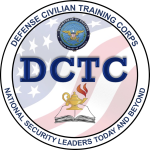
• High achieving students with a demonstrated interest in making a meaningful difference as part of an innovative and interdisciplinary team are selected from majors such as finance, engineering, sciences, business, and public policy to join a DCTC cohort at host universities across the United States.
• In addition to classroom learning, DCTC cohort scholars will participate in several hands-on challenge projects, integrating diverse thinking to solve complex, real-life problems.
• Summer internship placement with DoD labs and organizations will embed DCTC scholars within the civilian workforce for first-hand experience collaborating with dedicated, results-oriented teams working in every field from engineering to finance and supply chain management.
• Upon graduation, scholars will join the DoD full-time with the support and accelerated career advancement opportunities necessary to achieve their professional ambitions.
As the national security landscape continues to evolve, there is a critical need to support the Defense acquisition mission with immediate impact. AIRC Innovation Projects support this mission by addressing ways to improve defense acquisition and sustainment policies, practices, and processes. These projects will provide support to university research teams solving problems important to DoD’s Acquisition and Sustainment functional communities.






